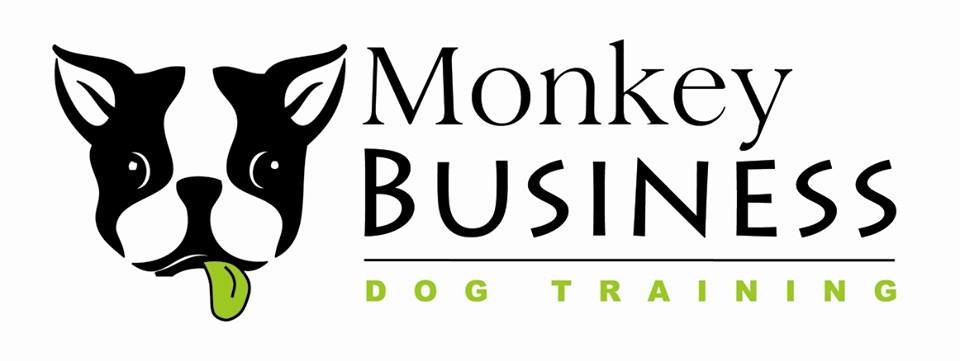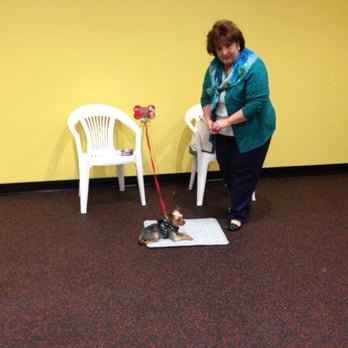Table of Contents
If you’ve been struggling to train your furry friend and are tired of all the misleading information out there, then “Monkey Business: A Guide to Effective Dog Training” is here to save the day! This comprehensive guide provides you with all the tips and tricks you need to ensure successful dog training without any monkey business. Say goodbye to frustrating training sessions and hello to a well-behaved and happy pup. Get ready to embark on a journey of learning and fun as you discover the secrets to effective dog training.
Chapter 1: Understanding Dog Behavior
The Importance of Understanding Dog Behavior
Understanding dog behavior is crucial for effective dog training and creating a harmonious relationship with your furry friend. By comprehending their actions and motivations, you can better address their needs and prevent or resolve behavior problems. This knowledge allows you to communicate effectively with your dog and build a strong foundation for training.
The Science Behind Dog Behavior
Dog behavior is influenced by a combination of genetics, environment, and individual experiences. A dog’s breed can predispose certain behavioral tendencies, but it’s important to remember that every dog is unique. Canine behaviorists and researchers study how dogs think and act, helping us understand the underlying principles of their behavior. This scientific knowledge assists us in effectively training our dogs and addressing behavioral issues.
Common Dog Behavior Problems
In order to address behavior problems, it’s important to recognize and understand them. Common behavior problems include aggression, separation anxiety, excessive barking, chewing, digging, jumping, fear and phobias, and excessive pulling on the leash. Each problem requires a different approach for resolution and prevention, which will be discussed in more detail later in this guide.
Identifying the Root Causes of Behavior Problems
To address behavior problems effectively, it’s crucial to identify the root causes behind them. Behavior problems can stem from a variety of factors, including fear, anxiety, lack of socialization, inadequate training, health issues, or even past trauma. By identifying the underlying causes, you can tailor your approach to address the specific needs of your dog and implement appropriate solutions.
Chapter 2: Building a Strong Foundation
Choosing the Right Dog
Choosing the right dog for your lifestyle and family is essential to building a strong foundation. Consider factors such as breed characteristics, energy levels, exercise requirements, and temperament when selecting your furry companion. Research and consult with professionals or experienced dog owners to ensure a good match between your lifestyle and the dog’s needs.
Creating a Positive and Safe Home Environment
Creating a positive and safe home environment is crucial for your dog’s well-being and overall behavior. Ensure that your home is dog-proofed, removing any potential hazards or toxic substances. Provide a comfortable space for your dog to rest, with access to food, water, and toys. Creating a predictable and secure environment helps your dog feel calm and secure.
Establishing Clear Rules and Boundaries
Establishing clear rules and boundaries is essential for your dog to understand their place in the family pack and what behaviors are acceptable. Consistency is key when setting these rules and boundaries, as dogs thrive on routine and clear expectations. Clearly communicate and reinforce these boundaries through positive reinforcement and rewards.
Developing Trust and Bonding with Your Dog
Building trust and bonding with your dog is a crucial aspect of training and creating a strong foundation. Spend quality time with your dog, engaging in activities that they enjoy. Use positive reinforcement and rewards to reinforce desirable behaviors. By nurturing a strong bond and trust, you create a solid foundation for effective training and communication.
Chapter 3: Essential Training Techniques

Positive Reinforcement Training
Positive reinforcement training is a highly effective and humane training technique that rewards desired behavior with treats, praise, or other rewards. This technique focuses on reinforcing positive behaviors rather than punishing undesirable ones. By rewarding good behavior, you motivate your dog to repeat those behaviors in the future.
Reward-Based Training
Reward-based training closely aligns with positive reinforcement training, as it also emphasizes rewarding desired behaviors. In addition to treats and praise, rewards can include toys, playtime, or access to something the dog enjoys. This approach helps build a positive association with training and motivates your dog to engage and learn.
Clicker Training
Clicker training is a popular technique that utilizes a small handheld device called a clicker to mark desired behaviors. The clicker is paired with a treat or reward, creating a conditioned response in the dog. The distinct sound of the clicker signals to the dog that they have performed the desired behavior and will be rewarded.
Voice Commands and Hand Signals
Voice commands and hand signals are fundamental tools for communicating and conveying commands to your dog. Consistent use of specific words and gestures paired with positive reinforcement helps your dog learn and respond to commands effectively. Combine verbal cues with hand signals to enhance your dog’s understanding and responsiveness.
Potty Training
Potty training is one of the first and most important skills to teach your dog. Establish a designated potty area and create a consistent routine for your dog to follow. Take them outside frequently, especially after meals or naps, and reward them when they eliminate in the appropriate location. Consistency, positive reinforcement, and patience are key to successful potty training.
Crate Training
Crate training provides a safe and comfortable space for your dog and assists in house training, preventing destructive behavior, and facilitating travel. Introduce the crate gradually and make it a positive experience by providing treats and toys. Use positive reinforcement and rewards when your dog enters the crate voluntarily, and never use it as a form of punishment.
Leash Training
Leash training allows you to have control and safely navigate outdoor environments with your dog. Start by introducing your dog to the leash and collar or harness gradually, using positive reinforcement and rewards. Practice loose leash walking and reward your dog for walking calmly beside you. With consistency and patience, your dog will learn to walk politely on a leash.
Chapter 4: Basic Obedience Training
Sit
The “sit” command is a basic obedience command that every dog should learn. Start by holding a treat above your dog’s nose, and then slowly move it back towards their tail. As your dog follows the treat, their bottom should naturally lower into a sitting position. Once their bottom touches the ground, reward them with the treat and praise.

Stay
The “stay” command teaches your dog to remain in a particular position until given a release cue or command. Start by asking your dog to sit or lie down. With an open hand, palm facing towards your dog, signal them to stay while simultaneously saying the word “stay.” Initially, only take a small step back, then return and reward your dog for staying in the desired position.
Come
The “come” command is crucial for recall and ensuring your dog returns to you when called. Begin by kneeling or crouching down and encouraging your dog to come to you, using a friendly and inviting tone of voice. Reward your dog with praise, treats, or toys when they reach you. Gradually increase the distance and add distractions for more advanced recall training.
Lie Down
The “lie down” command teaches your dog to lie down and remain in that position until released. Start with your dog in a sitting position, then hold a treat in front of their nose and slowly lower it to the ground. As your dog follows the treat, their body should naturally lower into a lying position. Once their chest and elbows touch the ground, reward them with the treat and praise.
Leave It
The “leave it” command is crucial for preventing your dog from picking up or engaging with potentially dangerous or unwanted items. Start by placing a treat in your closed fist and presenting it to your dog. As they show interest in the treat, give the command “leave it” and close your hand. Wait for them to stop trying to get the treat and reward them with a different treat or praise.
Drop It
The “drop it” command teaches your dog to willingly release an item from their mouth. Start by offering your dog a toy or low-value item to hold. Once they have a firm grip, show them a high-value treat and give the command “drop it.” As they release the item, reward them with the treat and praise. Gradually increase the value of the item being released.
Heel
The “heel” command teaches your dog to walk calmly beside you without pulling on the leash. Begin walking with your dog on a loose leash, holding a treat in your hand. Keep the treat by your side, close to your dog’s nose, and walk forward. Reward your dog for maintaining the desired position beside you. Gradually increase the duration and distance of walking in the heel position.
Chapter 5: Solving Behavior Problems
Aggression
Aggression in dogs can be caused by fear, territoriality, resource guarding, or a lack of socialization. Addressing aggression requires a comprehensive approach, including professional guidance, training, and behavior modification techniques. Avoid confrontational methods and instead focus on building your dog’s confidence, managing triggers, and implementing positive reinforcement training.
Separation Anxiety
Separation anxiety is a common behavior problem where dogs experience distress and anxiety when left alone. To address separation anxiety, gradually desensitize your dog to being alone and establish a predictable routine. Provide mental and physical stimulation, create a safe and comfortable environment, and use tools like calming music or pheromone diffusers to alleviate anxiety.

Barking
Excessive barking can be a nuisance and may indicate underlying issues such as boredom, fear, anxiety, or attention-seeking behavior. Identify the root cause of your dog’s barking and address it accordingly. Use positive reinforcement techniques to teach your dog an alternative behavior, such as “quiet,” and provide mental and physical stimulation to prevent boredom.
Chewing
Chewing is a natural behavior for dogs, but it can become problematic when they target inappropriate items like furniture or shoes. Provide appropriate chew toys and regularly rotate them to keep your dog engaged. Teach your dog what items are off-limits through positive reinforcement training and redirection. Ensure they have plenty of physical and mental stimulation to prevent boredom.
Digging
Digging is a natural instinct for dogs, but it can be frustrating when they dig up your garden or create holes in the yard. Create a designated digging area with soft soil or sand and encourage your dog to dig there. Provide mentally stimulating toys and activities to prevent boredom, and supervise your dog when they are in the yard to redirect any digging behavior.
Jumping
Jumping up on people can be an undesirable behavior, especially if your dog is large or excitable. Teach your dog an alternative behavior, such as sitting, and reward them for staying calm and grounded. Use consistent training techniques and avoid inadvertently reinforcing jumping by providing attention when your dog jumps. Redirect their energy into more appropriate activities and reward them for desired behavior.
Fear and Phobias
Fear and phobias can manifest in various ways, such as cowering, trembling, or attempting to escape. It’s essential to identify the triggers and create a safe and positive environment for your dog. Gradual desensitization and counterconditioning techniques can help reduce fear responses. Consult with a professional if your dog’s fear or phobia is severe or negatively impacts their quality of life.
Excessive Pulling on the Leash
Excessive pulling on the leash can make walks uncomfortable and challenging. Teach your dog loose leash walking through positive reinforcement training. Use tools such as a front-clip harness or head halter to assist with managing pulling. Take frequent breaks and reward your dog for walking calmly beside you. Consistency and patience are key to resolving this behavior problem.
Chapter 6: Training for Advanced Skills
Off-Leash Training
Off-leash training allows your dog to have more freedom while still maintaining control and obedience. Start in a safe and enclosed area, gradually increasing the level of distraction. Use long training leads and reward your dog for staying close and responding to commands. Advanced off-leash training requires a strong foundation in basic obedience and a trusting bond between you and your dog.
Trick Training
Trick training is a fun and mentally stimulating way to engage with your dog. Teach them a variety of tricks, such as shaking paws, rolling over, or playing dead. Utilize positive reinforcement training techniques and break tricks down into small, achievable steps. Reward your dog for their efforts, and have fun exploring new tricks together.

Boundary Training
Boundary training is helpful for establishing limits and preventing your dog from accessing certain areas. Use positive reinforcement and rewards to teach your dog to stay within specified boundaries, such as doorways or garden perimeters. Gradually increase the distractions and duration to reinforce the concept of boundaries. This training can be particularly useful for safety purposes or when traveling.
Advanced Obedience Commands
Building upon basic obedience commands, advanced obedience training involves teaching more complex commands and behaviors. Examples include “stay” for longer durations, responding to commands from a distance, or performing multiple commands in sequence. Practice in various environments and gradually increase the level of difficulty. Reward your dog generously for successfully mastering advanced obedience commands.
Agility Training
Agility training involves teaching your dog to navigate a course consisting of obstacles such as jumps, tunnels, and weave poles. This activity promotes physical fitness, mental stimulation, and strengthens the bond between you and your dog. Start with basic obstacle introduction and reward your dog for successfully completing each obstacle. Gradually increase the difficulty and speed of the course.
Tracking
Tracking training taps into a dog’s natural abilities to follow scent trails. Teach your dog to track by using treats or specific scents on a track. Begin with short and simple tracks, gradually increasing distance and complexity. Tracking offers mental stimulation, enhances your dog’s natural instincts, and can be an enjoyable activity for both of you.
Search and Rescue Training
Search and rescue training is a specialized discipline that prepares dogs to locate missing persons in various environments. This type of training requires professional guidance and expertise. Dogs are trained to follow scent trails, negotiate obstacles, and effectively communicate with their handlers. If you have an interest in search and rescue work, seek out appropriate training programs and organizations.
Service Dog Training
Service dog training is designed to assist individuals with disabilities by performing specific tasks and providing emotional support. This type of training requires professional guidance and skills tailored to the individual’s needs. Service dogs undergo extensive training to navigate public spaces, handle specific tasks, and remain calm and focused in various situations. Seek out reputable service dog training programs to ensure proper training and certification.
Chapter 7: Maintaining Training and Consistency
The Importance of Regular Training Sessions
Regular training sessions are essential for maintaining and reinforcing your dog’s training. Consistency and repetition help strengthen learned behaviors and improve reliability. Engage in short daily training sessions to keep your dog’s skills sharp and provide mental stimulation. Make training sessions fun and rewarding to keep your dog motivated and engaged.
Using Positive Reinforcement for Long-Term Success
Positive reinforcement is crucial for long-term training success. By rewarding and reinforcing desired behaviors, you encourage your dog to continue displaying those behaviors. Avoid punishment-based training methods, as they can have negative side effects and damage the trust between you and your dog. Consistently using positive reinforcement builds a positive association with training and strengthens your bond.

Dealing with Setbacks and Challenges
Training setbacks and challenges are a normal part of the training process. Remain patient, calm, and consistent when faced with setbacks. Identify the underlying cause of the setback and adjust your training approach accordingly. Seek guidance from professionals or experienced trainers if needed. Remember that each dog is unique, and progress may vary. Celebrate small successes along the way.
The Role of Consistency in Dog Training
Consistency is key in dog training. Dogs thrive on routine and clear expectations. Use consistent commands, gestures, and reinforcement methods to ensure your dog understands what is expected of them. Ensure that all family members and caregivers are on the same page and apply consistent training techniques. Consistency helps your dog understand the rules and boundaries, facilitating faster and more effective learning.
Chapter 8: Understanding Dog Body Language
Signs of Stress and Anxiety
Understanding your dog’s body language is essential for effective communication and identifying their emotional state. Signs of stress and anxiety include yawning, lip licking, panting, pacing, trembling, avoidance, or excessive shedding. Recognizing these signs allows you to address your dog’s needs and provide comfort or remove them from stressful situations.
Interpreting Aggressive vs. Playful Behavior
Differentiating between aggressive and playful behavior is crucial for preventing conflicts and ensuring a safe environment. Aggressive behavior may involve growling, snarling, raised hackles, or stiff body posture. Playful behavior, on the other hand, includes bouncing, bowing, wagging tails, and relaxed body postures. When in doubt, consult with a professional to properly assess and address any potentially aggressive behavior.
Reading Facial Expressions and Tail Positions
A dog’s facial expressions and tail positions provide valuable insights into their emotions and intentions. Pay attention to raised eyebrows, relaxed or tense facial muscles, open or closed mouths, and the position of the ears. A wagging tail can indicate happiness or excitement, but a tucked or stiff tail may indicate fear or aggression. Understanding these visual cues helps you respond appropriately to your dog’s needs.
Understanding Posture and Ear Movements
A dog’s body posture and ear movements reveal a lot about their mood and intentions. A relaxed and loose posture indicates calmness and contentment, while a rigid posture may signal fear or aggression. Forward-facing and perked ears may indicate attentiveness, while flattened or backward ears may indicate fear or submission. Interpret these body language signals to ensure effective communication and a better understanding of your dog’s needs.
Chapter 9: Training for Various Life Stages
Training Puppies
Training puppies is crucial for their development and behavior. Start with basic obedience commands, socialization, and potty training. Utilize positive reinforcement techniques and ensure that training sessions are short and enjoyable. Patience and consistency are key, as puppies have shorter attention spans. Focus on building a strong foundation and gradually progress to advanced training as they grow.
Training Adolescents
Training adolescents involves reinforcing and expanding upon the skills learned as puppies. Continue to practice basic obedience commands while introducing more advanced training techniques. Adolescents may test boundaries and exhibit selective hearing, so consistency and positive reinforcement remain essential. Provide mental and physical stimulation to channel their energy productively and prevent behavioral issues.
Training Adult Dogs
Training adult dogs allows for refining skills, addressing specific behavior concerns, and reinforcing desirable behaviors. Focus on keeping your dog mentally stimulated through continued training sessions and new challenges. Encourage lifelong learning and establish consistent routines. Engage in activities that suit their individual needs, such as agility training or nose work, to maintain their physical and mental well-being.
Training Senior Dogs
Training senior dogs can be beneficial for their overall cognitive health and quality of life. Focus on maintaining existing skills and adapting training methods to accommodate age-related changes. Adjust training sessions to suit their energy levels and physical abilities. Provide mental stimulation through puzzle toys or scent games. Training can help senior dogs stay active, engaged, and mentally sharp.
Chapter 10: Dog Training Tools and Equipment
Collars and Harnesses
Collars and harnesses are essential tools for controlling and restraining your dog during training and walks. Choose an appropriate collar or harness that suits your dog’s size, breed, and individual needs. Collars include flat collars, martingale collars, and prong collars, while harnesses include back-clip, front-clip, and head halter harnesses. Consult with professionals to select the most suitable option for your dog.
Leashes
Leashes provide control and safety during walks and training sessions. Choose a leash that is comfortable for both you and your dog. Standard leashes, retractable leashes, and long training leads are commonly used options. Ensure that the leash is appropriate for your dog’s size and strength to prevent injury or loss of control.
Training Treats
Training treats are a valuable tool for positive reinforcement training. Opt for small, soft treats that your dog finds highly motivating. Treats should be easy to consume quickly, avoiding distractions during training. Consider using a variety of treats to keep your dog engaged and excited during training sessions.
Clickers
Clickers are handheld devices that produce a distinct clicking sound. They are commonly used in clicker training to mark desired behaviors. Clickers create a clear and consistent signal that the dog associates with receiving a reward. Practice pairing the clicker with treats or rewards to establish the conditioned response.
Training Pads
Training pads are useful when potty training puppies or for dogs who require an indoor toileting option. Place the training pad in a designated area and encourage your dog to eliminate on it. Gradually reduce the size of the training pad and move it closer to the desired outdoor potty area to transition to external potty training.
Training Toys
Training toys, such as treat-dispensing toys or puzzle toys, can be used during training sessions to provide mental stimulation and reward your dog. These toys engage your dog’s problem-solving abilities and keep them entertained. Use them as a reward for desired behaviors or as a way to redirect your dog’s energy during training.
In conclusion, understanding dog behavior is essential for effective training and building a strong bond with your furry friend. By investing time and effort in training techniques, you can address behavior problems, teach basic obedience, and even advance to more specialized skills. Remember to use positive reinforcement, be patient, and maintain consistency throughout the training process. With this comprehensive guide, you’ll be well-equipped to navigate the world of dog training and have a well-behaved and happy companion by your side.



